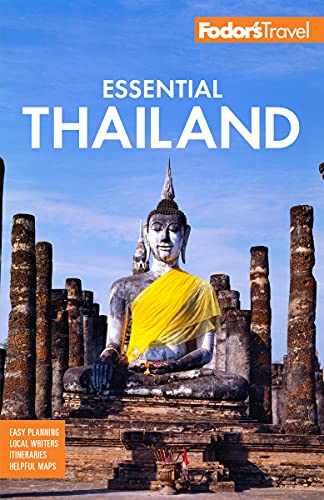Thai Massage
Thai massage, once only available at temples or tiny shophouses, has become much more popular in recent years. You'll find masseurs and masseuses at work all over the country—in bustling markets, at boutique spas, and in jungle hideaways.
Today massage is a pleasant and relaxing part of Thai culture, and you may see locals giving casual shoulder, back, and arm massages to their friends. But nuad paen boran (ancient massage) is also a branch of traditional Thai medicine. Originally it was taught and performed in Thai temples, which were historically places of physical—as well as spiritual—healing.
Traditional massage combines acupressure, reflexology, yoga, and meditation. Practitioners believe that 10 energy lines, called sip sen, link the body's meridian points. Blocked lines may lead to physical or spiritual ailments. Massage is thought to unblock the energy lines, clearing toxins and restoring balance to the body.
Where to Get Massage
Outdoors: At markets, on beaches, and at temple fairs, masseurs and masseuses set up shop alongside street vendors. On the beach you'll lie on a mat; at the market you'll probably be seated in a street-side plastic or lounge chair set up for foot massage. Prices vary—a one-hour foot massage might cost as little as B100 at a temple fair or B250 on a popular beach.
Resort and Hotel Spas: For five-star pampering, head to upscale hotels and resorts, whose luxurious, tranquil spas offer an extensive array of massages, including Swedish massage, plus other treatments like tai chi and new-age therapies. Expect to pay at least B2,500 or more for an hour-long massage at a top Bangkok hotel—a lot by Thai standards, but still less than what you'd pay back home.
Restrooms: In a few clubs and bars (both gay and straight), some visitors are alarmed when men's restroom attendants start massaging their shoulders as they stand at the urinal. If you don't like it, ask them to stop (mai ow, kup). Otherwise, a B10 tip is welcome.
Shophouses: These ubiquitous massage parlors offer no-frills service. Expect to share a room with other patrons (curtains separate the cots); if you're getting a foot massage, you may be seated in the shop window. There's often music, TV, or chatter in the background. A two-hour massage costs at least B400. Though many shophouses are legitimate businesses, some offer "extra" sexual services. To avoid embarrassing misunderstandings, steer clear of treatments with suggestive names, like "special" or "full body" massage. You can also ask the concierge at your hotel to recommend a reputable place.
Temples: Some temples still have massage facilities, and massages are often provided to the elderly at no charge. At Wat Po in Bangkok you can receive a massage in an open-air pavilion for B420 an hour.
Urban Spas: A growing phenomenon, urban spas are more upscale than shophouse parlors. They're often located in old Thai houses, with contemporary Asian-style private treatment rooms. You'll have more options here: simple Thai massage is still on the menu (for B1,000 and up per hour), along with body scrubs, facials, and various other treatments.
The Moves
Thai massage is an extremely rigorous, sometimes painful experience, and people with back, neck, or joint problems should not undergo it without seeking medical advice first. But it can also be very pleasurable. It's okay to ask if you want softer pressure (bow bow, kup/ka).
Massage artists primarily work with their hands, but they sometimes use elbows, knees, and feet to perform deep-tissue kneading. They occasionally apply balm to ease muscle aches, but they traditionally don't use oil. They may push and pull your body through a series of often contorted yogic stretching movements. There's normally a set sequence: you start lying on your back and the massage artist will work from your feet through your legs, arms, hands, and fingers. Then you turn over for legs, back, neck, head, and face. At the end the masseur will stretch your back across his or her upturned knees. Some people find that they have better flexibility after a massage, in addition to relief from muscular aches.
Massages are booked by the hour, and aficionados say two hours is best to get the full benefit. In most shophouse parlors the masseuse will first bathe your feet and then give you a pair of pajamas to wear. Spas have shower facilities. You can remove your underwear or not—whatever makes you comfortable.
The standard varies enormously. If you find a masseur or masseuse you like, take his or her name (sometimes they'll have an identifying number as well) and return to that person the next time.
Tipping
Tipping is customary. There aren't hard-and-fast rules about how much to tip, but B50 to B150 at a shophouse, and 10% to 20% in a spa, is about right.
Alternative Massage
Foot massage: This popular treatment is typically a half-hour or hour-long massage of the feet and lower legs, usually with oil or balm. Foot massage is based on the reflexology principle that manipulating pressure points in the feet can relieve disorders in other parts of the body.
Oil Massage: Most parlors and spas now offer oil massage, which is a gentler treatment based on Swedish massage and doesn't involve stretching. Masseurs will sometimes use oils with delicious aromas, such as lemongrass or jasmine.
Learn the Art of Massage
Bangkok's Wat Po is an acknowledged instruction center with an almost 200-year pedigree. A five-day, 30-hour course costs B9,500. You can get more information on their website, www.watpomassage.com. The Thai Massage School in Chiang Mai (www.tmcschool.com) is also good. Many shophouse parlors in both cities now also offer courses (a one-hour session at a Khao San Road shophouse costs about B250).




